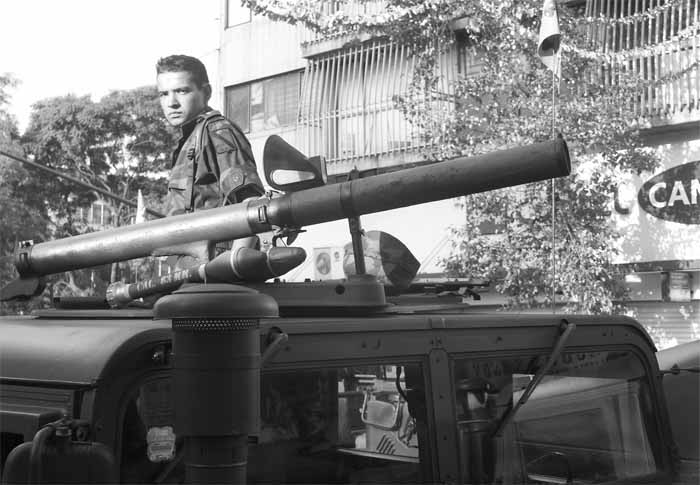
As soon as it took power, the new administration of President Felipe Calderón Hinojosa declared war against the drug traffickers in Mexico. The cartels responded in kind, and this gave way to almost open warfare in the streets of the main Mexican urban centers, with almost 1,000 deaths reported within the first months of 2007. Before this, in mid-2006, the Army intervened in Oaxaca, when a local uprising against the State governor left some 20 dead. In December 2006, the President attempted to transfer 7,500 soldiers, and 2,500 Marines to reinforce the Federal Police (PFP – Policía Federal Preventiva), but the move was resisted by the military, and presented several constitutional challenges. Then in March 2007, the Army was summoned to San Salvador Ateco, after a series of kidnappings and armed encounters between civilians and police.
In an effort to bring control and reinforce law enforcement agencies, the government modified Articles 1st, 2nd, and 2nd Transitory of the Military Organic Law, in May 2007, allowing for the creation of the new elite Federal Support Force Corps (CFAF – Cuerpo de Fuerzas de Apoyo Federal). The Defense Secretariat (SEDENA) provided 1,884 elements of the Army and Air Force. In fact, the initial strength was made up from reorganizing the Special Amphibious Forces Groups (GANFE – Grupos Anfibios de Fuerzas Especiales), and the force is expected to eventually grow to 3,500 elements, with the task of “restoring order and public security, combating organized crime, or performing against acts that threaten the homeland security.”
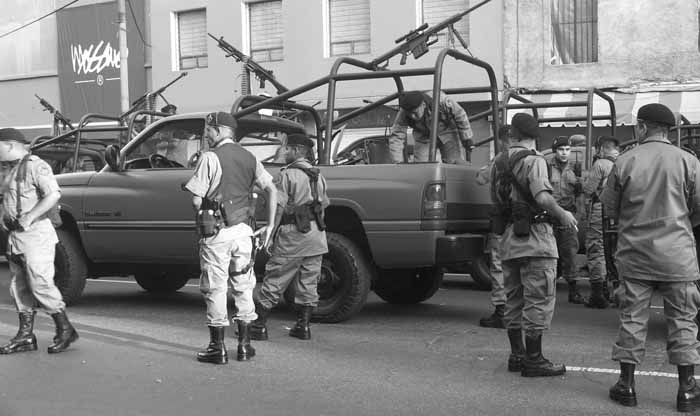
For years now, the government has attempted to hunt down the cartels using the military, and militarizing some police forces. In 1994, the Army established the Special Airmobile Forces Groups (GAFE – Grupos Aeromóviles de Fuerzas Especiales), and these were followed in 2001 by the GANFEs, also under Army Command, and both types of outfits were charged with arresting drug lords. The Navy also deployed Special Forces (FES) outfits for the same task, and the police organized several special operations units as well. According to press dispatches, for instance, the Special Operations Police Unit (UPOE) from the Oaxaca State Public Security Direction was trained by the Guatemalan Kaibiles between 1994 and 1999 at Vicente Guerrero, Villa de Zaachila, some 15km from Oaxaca City.
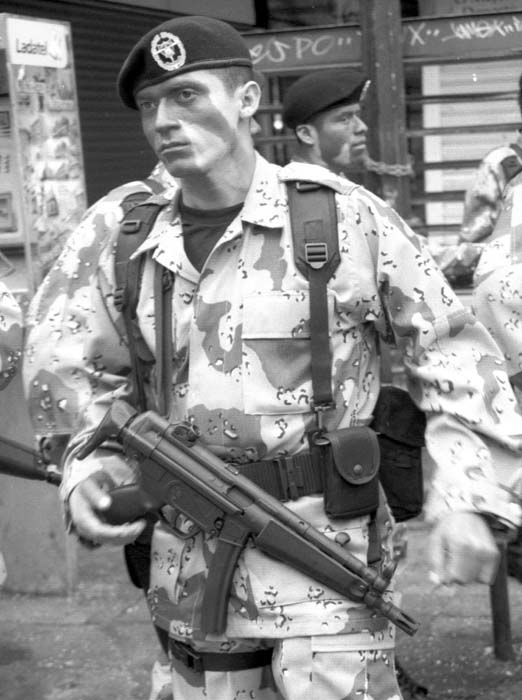
In early 2000 when the Army GAFEs were dispatched to Nuevo Laredo, at Tamaulipas, to chase Osiel Cárdenas Guillén of the Gulf Cartel, several commandos deserted to form the a hired-army. Their radio calls used code names starting with “Z”. The “Zetas” offered their services to the drug lords, and the war was on. The cartels are also said to have hired complete units of “kaibilillos” – former Guatemalan Kaibil Commandos. The PFP under the Ministry of Public Security and the Federal Investigations Agency (AFI – Agencia Federal de Investigaciones), subordinated to the District Attorney’s Office (PGR – Procuraduría General de la República), found themselves outgunned by the cartels.
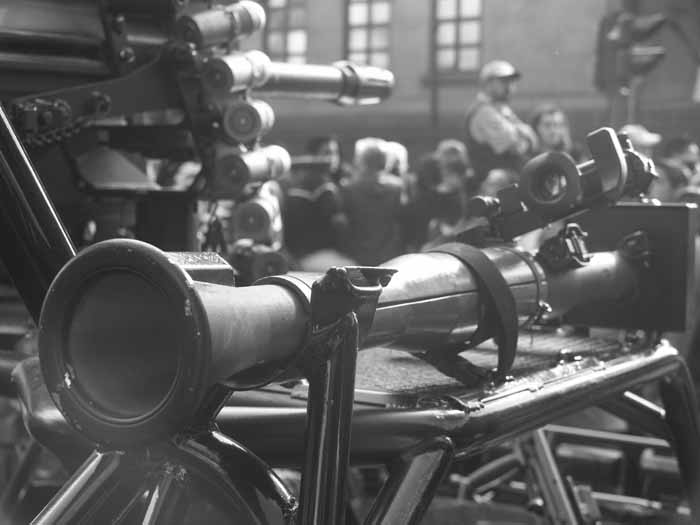
The first step for the new outfit was a National Supreme Court Justice (SCJN) decision that allowed the Military to provide support in homeland security matters. As part of the military offensive, the Armed Forces and Law Enforcement agencies have reorganized and implemented a complete overhaul of the small arms arsenal.
Small Arms Arsenal
The FX-05 Xiuhcóatl is the new standard issued rifle for the Army and is being produced in large quantities by the DIM (Military Industry Department) after HK dropped its complaint for trade mark violations in February 2007.
The P7M13S is the general service pistol, with over 10,000 acquired. The Military Police prefers the P9S while Special Forces prefer the P226, along with Model 5906, and Model 6904. The commandos also use the Steyr M-A1 machine pistol and other small arms. The MP5A2 is the standard submachine gun for officers while the MP5K used for special service together with the MP5SD2 and the MP5SD6. The G3A3 and G3A4 remain as the standard issued rifle, with the MSG-90, PSG-1 and Morelos used by snipers at battalion level. The Model 82A1 is reserved for the GAFEs and the new CFAF. The Army also has an arsenal of some 1,521 shotguns, such as HK510, and Model 590 Mariner.
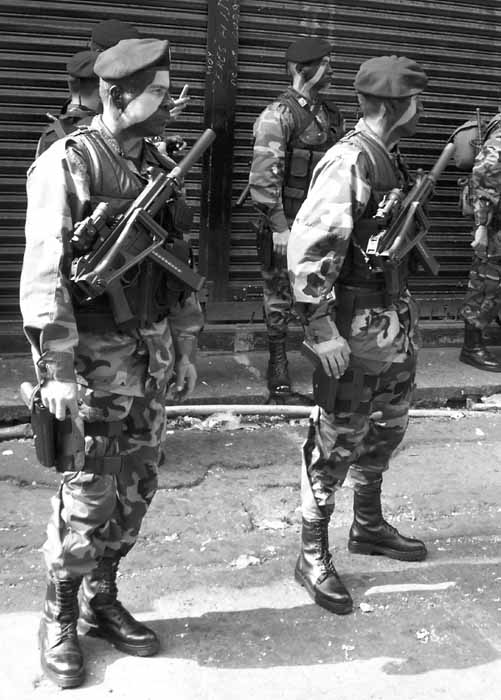
At squad level, the MINIMI-Para Mk 2 is often seen, along with the HK21A1, which is standard for the Infantry. The AA 7.62N F1 Char No. 1 comes in some of the ERC 90 F1 Lynx, and DNC-1 armored cars, but it is in the process of being replaced with the MAG-60-20, standard for the armored cavalry. The MAG is already a feature of the HWK 11 APCs, along with the MAG-60-20 found on flexible gun mounts on VBL, DN-III, DN-IV Caballo, and DNC-2 armored personnel carriers. The MAG-60-40 is found as a coaxial weapon in the DN-IV Caballo and DN-V Toro APCs. The Browning M2QCB and Browning M2HB, along with the Browning M3M are standard on armored transport vehicles.
The M203 is widely used under the G3 rifle, and it is also encountered as a pistol, and under the M16 rifle; however, the MGL MK1 is becoming the standard grenade launcher along with the German GMG type. The MK 19 MOD 3 is mounted on tripods and flexible pedestals.
Fire support for the infantry comes from Vektor M4L3, C03 Commando, M2 Cazador, M19 and ZCZ M57 60mm light mortars. There are also a great variety of 81mm models, and Brandt 120mm types; for antitank work, the RPG-7V is now standard, along with the French RL-83 Blindicide (some 1,191 acquired). The KAA (204GK) 20mm cannons were once used to equip the modernized M8 armored cars, but these have been exchanged for the South African M2 model, while the GAI-BO1 with the KAB-001 5TG cannon remains as the main AAA piece.
Other Small Arms
The Mexican Navy, and particularly its Marine Corps, deploys a considerable arsenal. Its elite units (FES) appear to prefer the Five-seveN, Mod 92FS and S&W Model 657 pistols and the M1911A1. The P90 is also widely used together with MP5 variants, and UMP submachine guns. The M16A2 rifle and Carbine, M16A2 Commando, and M4 remain as standard issued weapons for the Marines, and some FAL-Paras have also been observed. The MSG90 remains as preferred weapon for Marine snipers along with the PSG-1 model. The Marines carry the Model 590 Mariner shotgun, and the CETME AMELI SAW, and now are taking delivery of MINIMI-Para Mk 2 models. The HK21A1 and MAG-60-20 are also found in tripods and pedestal mounts, while the Browning M3M is found as door guns for the new AS 565MA Panther helicopters, along with the GAU-19/A which arm the MD902 Combat Explorer helicopters.
The Marines use the MGL MK1, and M203PI grenade launchers, as well as the CIS 40AGL model, with the MK 19 MOD 3 found on Mules wheeled vehicles and Trucks. The Marines appear to have taken delivery of some B-300s.
The country has been flooded with arms for the police and thugs alike. The Five-seveN is found in the hands of the Federal District Police, while the Mod 92FS has been observed in the hands of the elite GOE, and AFI. The Glock 17 is standard with the Judicial Antidrug Police, and the P225 is used by the Federal District Police. The AFI uses the S&W Model 5906 while other State Police prefer the Model 6904. The GOPE also uses the Browning HP Mk 3.
The submachine gun arsenal includes the Mod 12S used by the Federal District Police and the CAR-15 R635 (M16 SMG) of the AFI. The PFP carries the MP5A3, which is also a preferred weapon of the Anti-drug Police and State Police forces. The Uzi and Uzi Model B Carbine is found on the hands of several police agents, and in Mexico City several local police agents were observed equipped with the Mendoza HM-3-S. There are also a few MGP-84s made in Peru.
The local police makes wide use of the AR-15 R6000 Sporter, AR-15A1 R613 (M16A1), AR-15A2 R705 (M16A2), AR-15A2 R6530, CAR-15A1 R653 (M16A1 Carbine), CAR-15A2 R725A (M16A2 Carbine), CAR-15A2 R6520 Government Carbine, HK G36A1, G36V, HK33A2, HK33A3, HK33KA3, HK53A3 and Galil SAR. These weapons have also found their way to different crime organizations, along with the ever present AK-47, AKS-47, and AKMS. Most police snipers use the Model 700 while other units use the Model 500ATP8 shotgun.
Hardened Enemies
Article 11 of the Organic Law allows the CFAF to respond directly under the orders of SEDENA instead of the President, and to the request of local civilian authorities. In fact, the creation of the CFAF is only the initial step for an ambitious plan to bring order, and the creation of a new 40,000 strong Federal Police Corps (CFP – Cuerpo Federal de Policía) with a new gendarmerie to be organized for operations in towns with less of 20,000 inhabitants. The plan is said to have been designed by experts from the National Security and Investigation Center (CISEN – Centro de Investigación y Seguridad Nacional), the PFP and the AFI, with advice provided by the Spanish Civil Guard, FBI and DEA. The CFP boss will have links to the Treasury, State, Immigration and Custom departments, and it is expected to have strong links to the US DEA as well, along with increased US presence in the country.
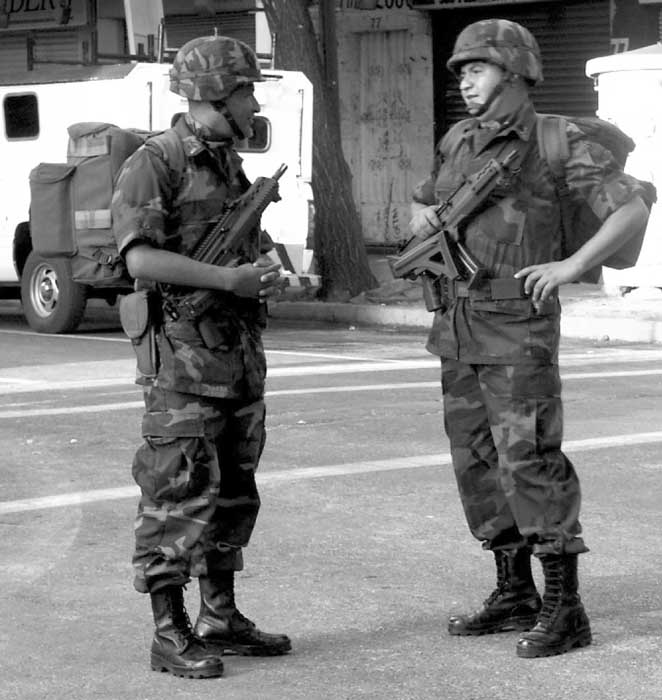
The Mexicans, however, stress that the main problem remains the strong drug consumption of the US market. They point out that 1kg has a street value of USD$12,000 in Mexico, but reaches USD$25,000 at the US border and up to USD$50,000 in any street of an American City.
| This article first appeared in Small Arms Review V12N10 (July 2009) |











